Compared to other letters, fruits that start with Q are probably the hardest to name. The chances are that most people can only name only one or two!
Rare as they are, the letter Q is home to some of the most nutritious and fascinating fruits and vegetables. This article will give you the complete list of these natural Q-named foods, their taste, and some of their applications in cuisines.
Keep reading to not miss out these interesting facts and knowledge. There are also some Q veggies. Without further ado, let’s dive right into the house of Q-fruits and veggies.
10 Fruits That Start with Q with Filters
Here are 10 fruits that begin with the letter Q, organized by their familiarity. For more convenience, you can employ the filter to identify exotic varieties, those are both fruit and vegetable, and options ideal for delights, beverages, or garnishing.
Quince
- For Dishes
Quince is a unique fruit that resembles a cross between an apple and a pear. Raw quinces taste bitter and sour, so it’s not usually eaten raw.
However, when cooked, it turns wonderfully sweet and soft, often used in jams, jellies, pies, and marmalade. They also have a flowery, soothing aroma that many consider the “fragrance of Fall”.
Quince was found in the ancient Akkadian Empire (modern-day Iraq) and Judea (Israel). In Greece, quince was considered the sacred emblem of Aphrodite – the goddess of love, beauty, pleasure, passion, and procreation.
In modern times, quinces are grown in continents with warm-temperate and temperate climates.
Quandong
- For Dishes
Next on the list is quandong – a popular Australian native bush food. They are red berry-like fruits growing wild in Australia’s semi-arid to arid areas and cultivated in New South Wales.
Although relatively big in size (about 0.8 inches in diameter), quandong consists mainly of a large seed wrapped by a thin layer of sweet, slightly tangy flesh. This tasty fruit is widely consumed as pie fillings and can be made into quandong and chili dipping sauce.
Furthermore, Since it is packed with vitamin C, quandong is often called an “Aussie superfood”. It has double the vitamin C found in 1 orange. In addition, quandong’s seed is a good source of essential oils.
Quararibea Cordata
- Exotic
- For Dishes
Also called the South American sapote or chupa-chupa, Quararibea Cordata is native to the Amazon rainforest, so it’s a little tricky to find outside its native habitat in Brazil, Colombia, Ecuador, and Peru.
Quararibea has a soft, fibrous texture with a juicy, sweet taste that resembles the taste of apricot and pumpkin. It is often peeled and eaten by hand, though sometimes you can find it in cocktail and juice form.
Fun fact: In 1964, US pomologist Bill Whitman received quararibea seeds from Peru and had successfully planted a tree in his garden located in Florida. Other than that, the exotic fruit has not received much recognition in the international market.
Queen Anne Cherry
- For Dishes
- For Garnish
Queen Anne cherries first came to the United States in 1964 with the colonists and got its name from Seth Lewelling – a pioneer orchardist. Before that, this cherry species was cultivated in Greece, the Roman Empire, and England. It was called the Napoleon cherry.
These cherries are similar to the Rainier cherries in taste and appearance, which have a sweet taste and creamy-yellow to golden-yellow base color.
Thanks to its natural, delightful sweetness, Queen Anne cherry tastes exceptional on its own and can be made into jam, chocolate, or used as a kind of canned fruit.
In addition, it is also a good source of vitamins and antioxidants – substances that can prevent or slow down the damage caused to cells by free radicals.
Queen Tahiti Pineapple
- Exotic
- For Beverages
Speaking of fruits with a royal name, I still have a few more on the list, and Queen Tahiti pineapple is one of them. As its name implies, the Queen Tahiti or Painapo pineapple is mainly grown and harvested in Moorea – an island northwest of Tahiti.
This pineapple has a distinctly long shape with golden, hexagonal rind and sharp, pointy leaves. The star of the show, though, is the luscious, highly aromatic flesh that is full of a rich and sweet flavor.
Thanks to its strong smell and taste, Queen Tahiti pineapple is an exceptional choice for both eating fresh, juicing, and winemaking. In addition, it is also commonly used in making salad dishes or grilled and paired with fish, meat, or rice.
Fun fact: Every year, the people of Moorea Island hold a pineapple festival to celebrate the Queen Tahiti pineapple, as it is one of their most profitable income sources.
Queen Apple
- For Dishes
Next in the royal family is Queen apple coming from New Zealand. Appeared in New Zealand in the early 1800s, Queen apple is well-known for its deep, crimson red, and naturally russeted skin.
Queen apple is born from cross-breeding the Royal Gala and Splendour genus. It tastes relatively sweet and juicy, with some lingering hints of banana and pear. Top it up with a fruity, pleasant aroma and crunchy texture, and you now have an apple that everyone loves.
Thanks to its taste, Queen apple is often eaten as it is or mixed with other fruits or vegetables to make salad dishes. It can also be juiced to create a healthy drink that is rich in vitamin C, fiber, and potassium.
Queen Forelle Pear
- For Dishes
- For Garnish
You might have heard of this fruit by its simpler name Forelle. Queen Forelle pear is comparatively small in size with a thin, smooth outer layer that will turn blush red and golden when it’s ripe. Thus creating a brilliant contrast of rosy pink specks and bright yellow.
Not only delicious, but Queen Forelle pear is also a sight for sore eyes.
The inside pulp is moist, pleasantly sharp, and mostly sweet. It can also be a little sour and has a firm, albeit coarse texture. Thanks to its small size, Queen Forelle pear is an excellent choice for a snack and can be paired with various dishes to add more color and flavor.
Some of the treats that would happily welcome the appearance of Queen Forelle pear are winter salad, oatmeal, waffles, chocolate, Greek yogurt, chicken, sandwiches, and pork belly.
For fans of sweets, there are also many options for desserts made with pear that you might even feel overwhelmed at first glance. From luscious tart to delicious cake, pears can be added to almost anything.
Fun fact: In German, the name Forelle means trout, possibly referring to the resemblance of the pear’s red lenticels and the red-ish color of a trout.
Quinault Strawberry
- For Beverages
- For Dishes
Who doesn’t love strawberries, right? Quinault strawberries are a type of strawberry that can be harvested twice a year in Spring and Autumn.
With its outstanding size and soft, sweet taste, the Quinault strawberry can be enjoyed fresh or preserved. Moreover, this kind of strawberry is also an ideal choice for home gardeners as it’s quite easy to grow and best suited for the Pacific Northwest and the Midwest.
As an everbearing strawberry, the Quinault variety is an amazing addition to baking enthusiasts’ pantry.
Querina Apple
- For Beverages
- For Dishes
Also called Florina, the Querina apple is a French domestic cultivar that combines the characteristics of Jonathan, Golden Delicious, and Rome apples. Its skin is a beautiful blend of purple-red and yellow shades.
Querina’s pulp tastes sweet with a slight hint of tart, and it’s quite juicy. Typically, this flavorful apple feels moderately firm while holding and has a crisp, crunchy texture. However, Querina apples can sometimes be a little tender, which is not to everyone’s liking.
This medium to large-sized apple is often eaten fresh or made into delicious apple ciders. Additionally, you can keep Querina apples for a fairly long time, as they normally last about 3 months.
For both eating fresh and cider making, Querina apple is a perfect choice.
Quenepa
- Exotic
- For Beverages
Another lesser-known food starting with the letter “Q” is quenepa. Despite its unassuming look, quenepa is packed with calcium, thus being one of the few vegetables that can enhance bone strength.
Quenepa is commonly known as the Spanish lime or mamoncillo. This Caribbean-originated lime has a light sour taste that will gradually turn sweeter as it ripens, with moist and quite gooey pulp. All in all, quenepa can be described as a combination of lime and lychee.
Quenepa is often eaten fresh or canned and sometimes used in making alcoholic and soft drinks. This small lime can give your body a decent amount of vitamins A and C, iron, phosphorus, and fiber.
However, you should be careful with its seed when eating as it is a potential choking hazard.
What Are Ideal “Q” Vegetables?
Similar to fruits, Q-named veggies are pretty rare, but I’ve selected some ideal names, such as:
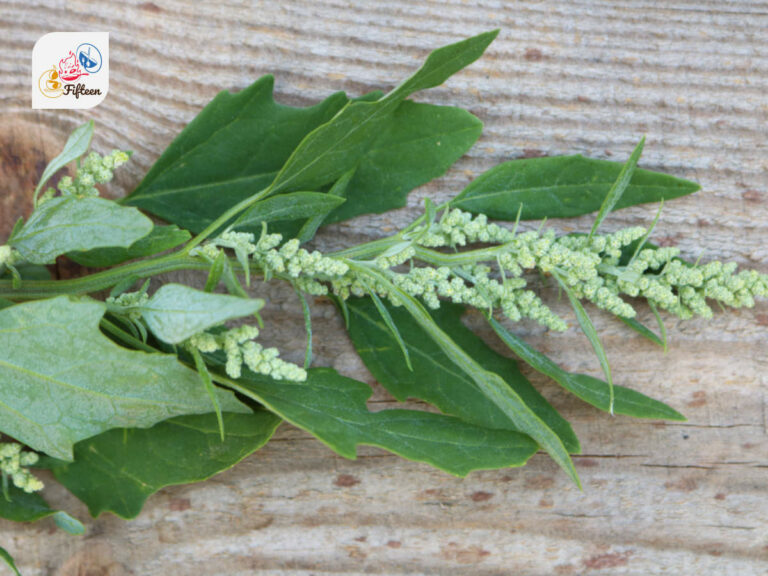
Quinoa Leaves
These leaves from the quinoa plant, offering a mild, slightly nutty flavor.
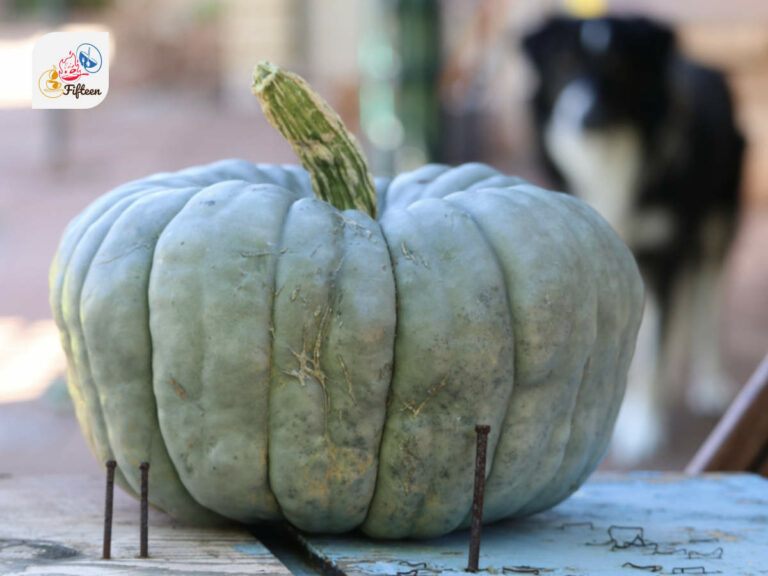
Queensland Blue Squash
It’s a large, blue-hued winter squash with sweet, orange flesh.
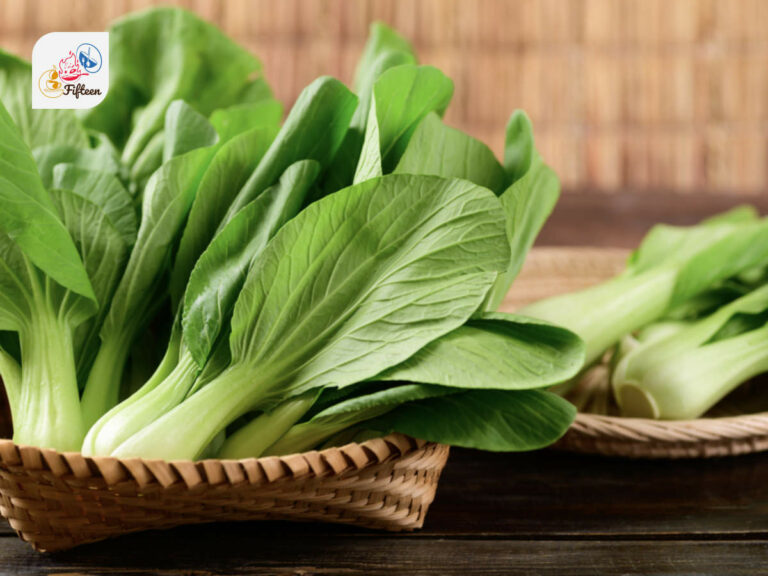
Qing Jiang Cai
It’s a leafy green vegetable with tender texture and slightly peppery taste. The veggies is popular in Chinese cuisine.
There are a few more vegetables with names starting with Q worth exploring.
Finally, with this knowledge, I’m sure that you will be able to impress others with your insights about these natural offerings.
Are there any fruits or vegetables you’d like to add? Feel free to comment down below, and don’t forget to like and share this article!
Are you interested in exploring fruits starting with other letters? From A to Z, there are many amazing options to uncover!


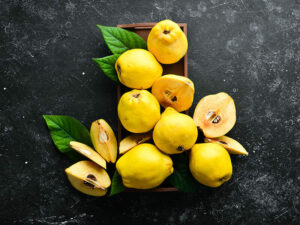
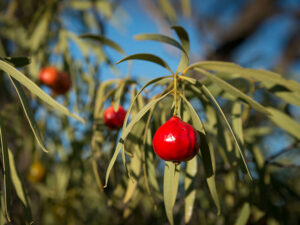
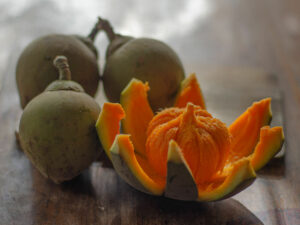
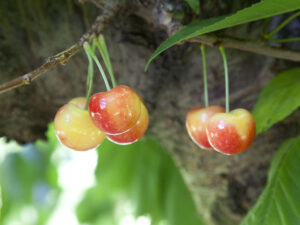
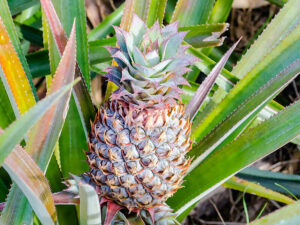
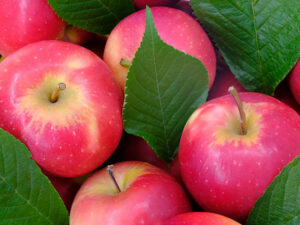
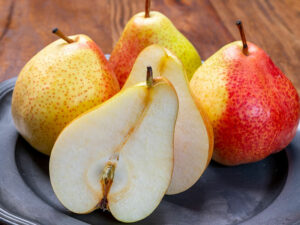
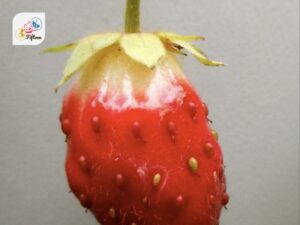
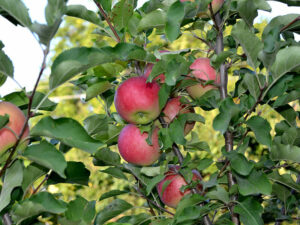
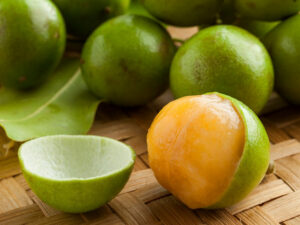
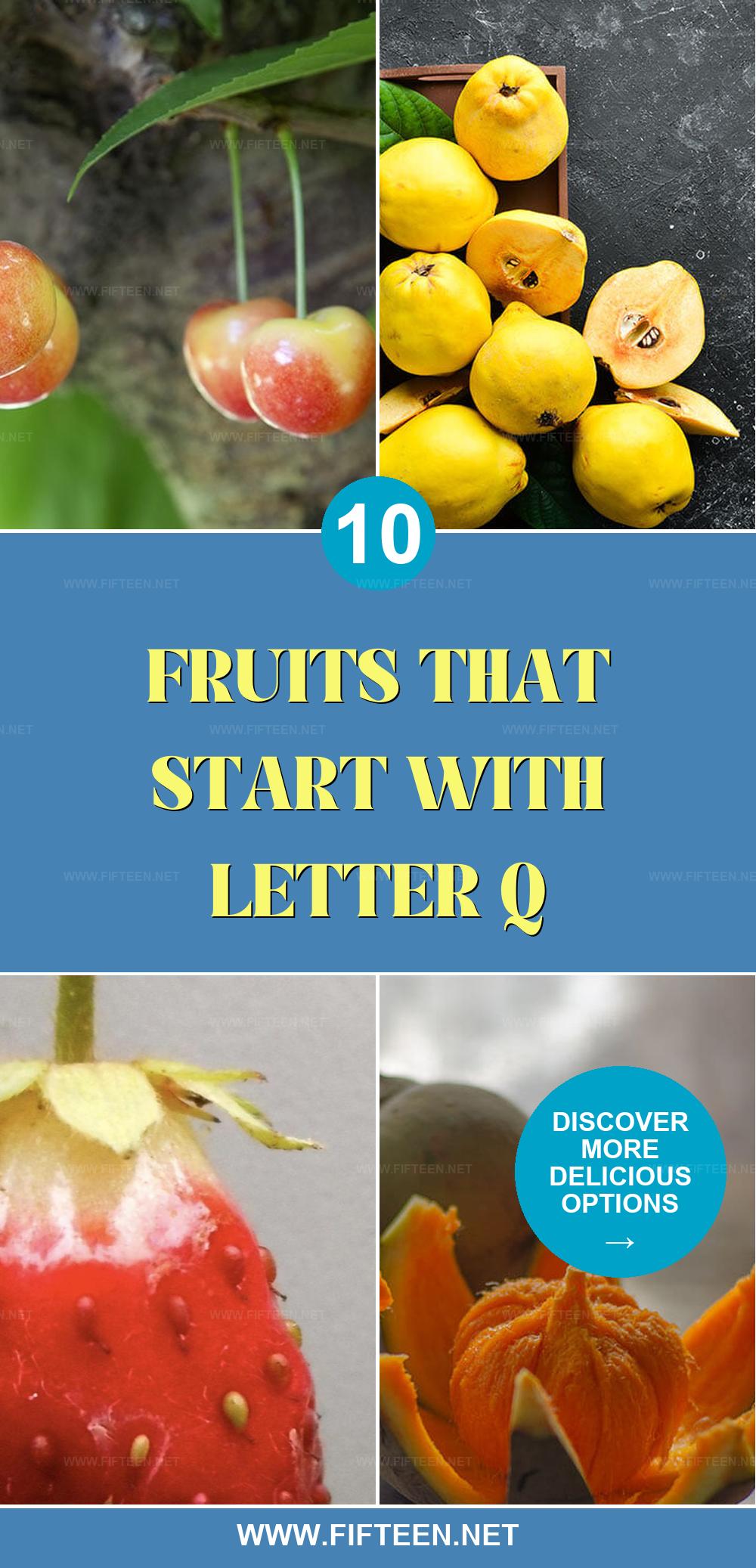
Jamie Scott
Editor in Chief, Senior Content Writer
Expertise
Home Cooking, Meal Planning, Recipe Development, Baking and Pastry, Food Editor, Cooking-video Maker, Western Food Evaluation Expert
Education
Le Cordon Bleu College of Culinary Arts
Local Community College, New York, NY
Jamie Scott is a skilled culinary expert and content creator specializing in Western cuisine. With over 15 years in the culinary field and formal training from Le Cordon Bleu, Paris, Jamie deeply understands how to blend nutrition with delicious flavors. His passion for cooking matches his commitment to making healthy eating accessible and enjoyable.
On Fifteen.net, Jamie brings a fresh perspective to classic dishes and beverages, offering readers insightful recipes, cooking tips, and a fresh view on meal planning that emphasizes taste, health, and simplicity.